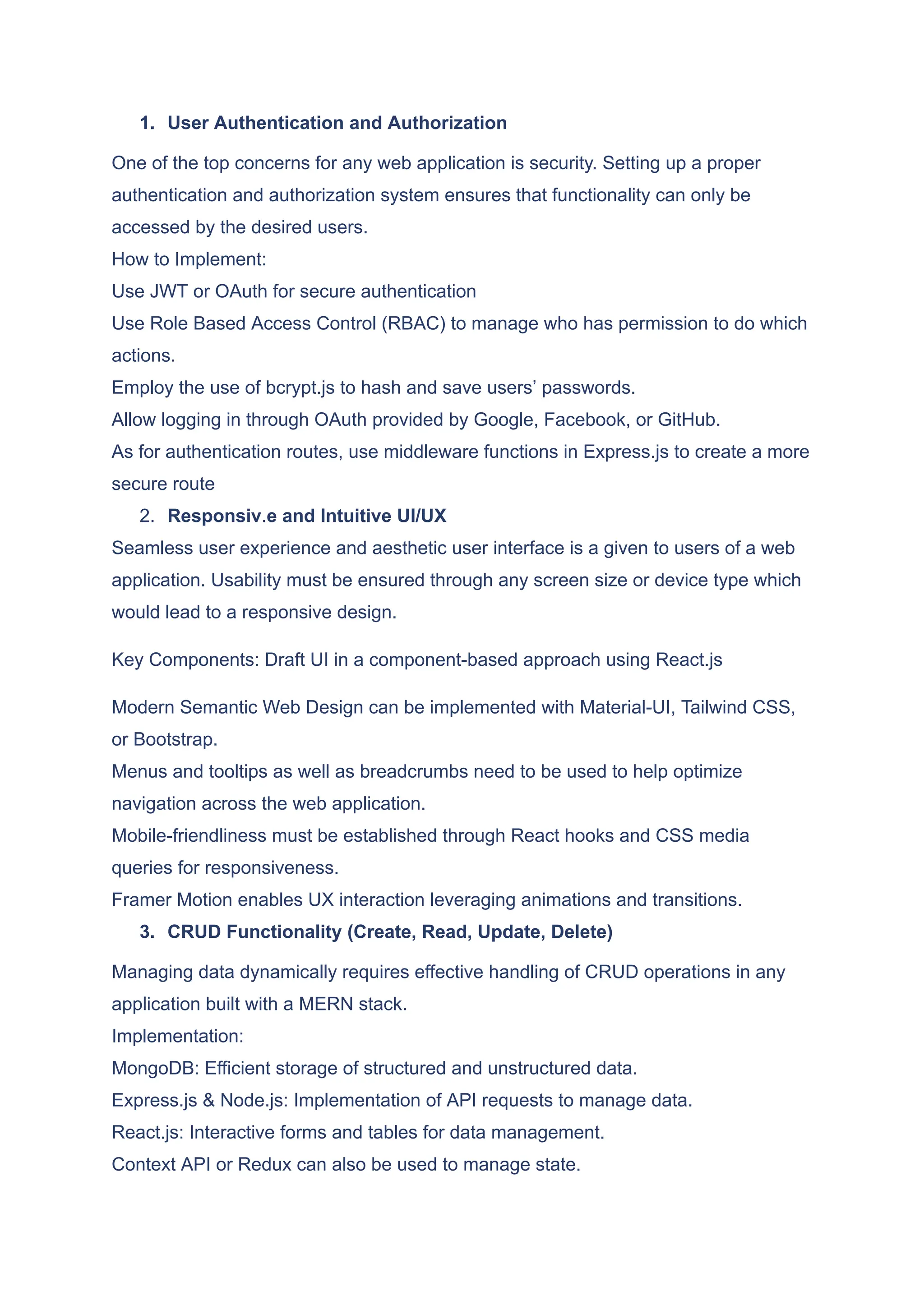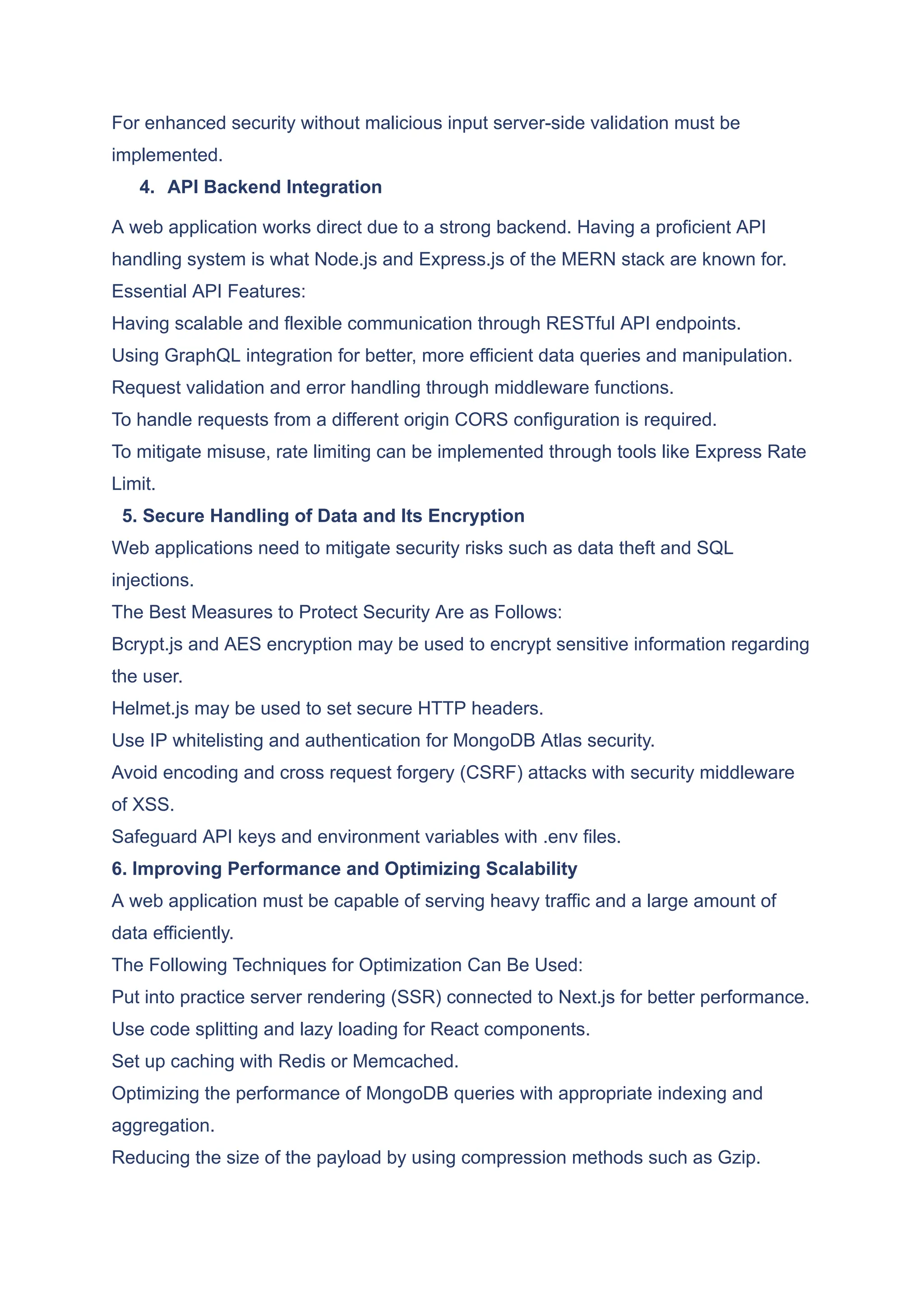The document outlines 10 key considerations for building an effective MERN stack web application, emphasizing the importance of security, user experience, and scalability. It provides detailed recommendations on essential features such as user authentication, responsive design, CRUD functionality, and data encryption, among others. Overall, it highlights the critical elements needed for successful web application development in the evolving digital landscape.




